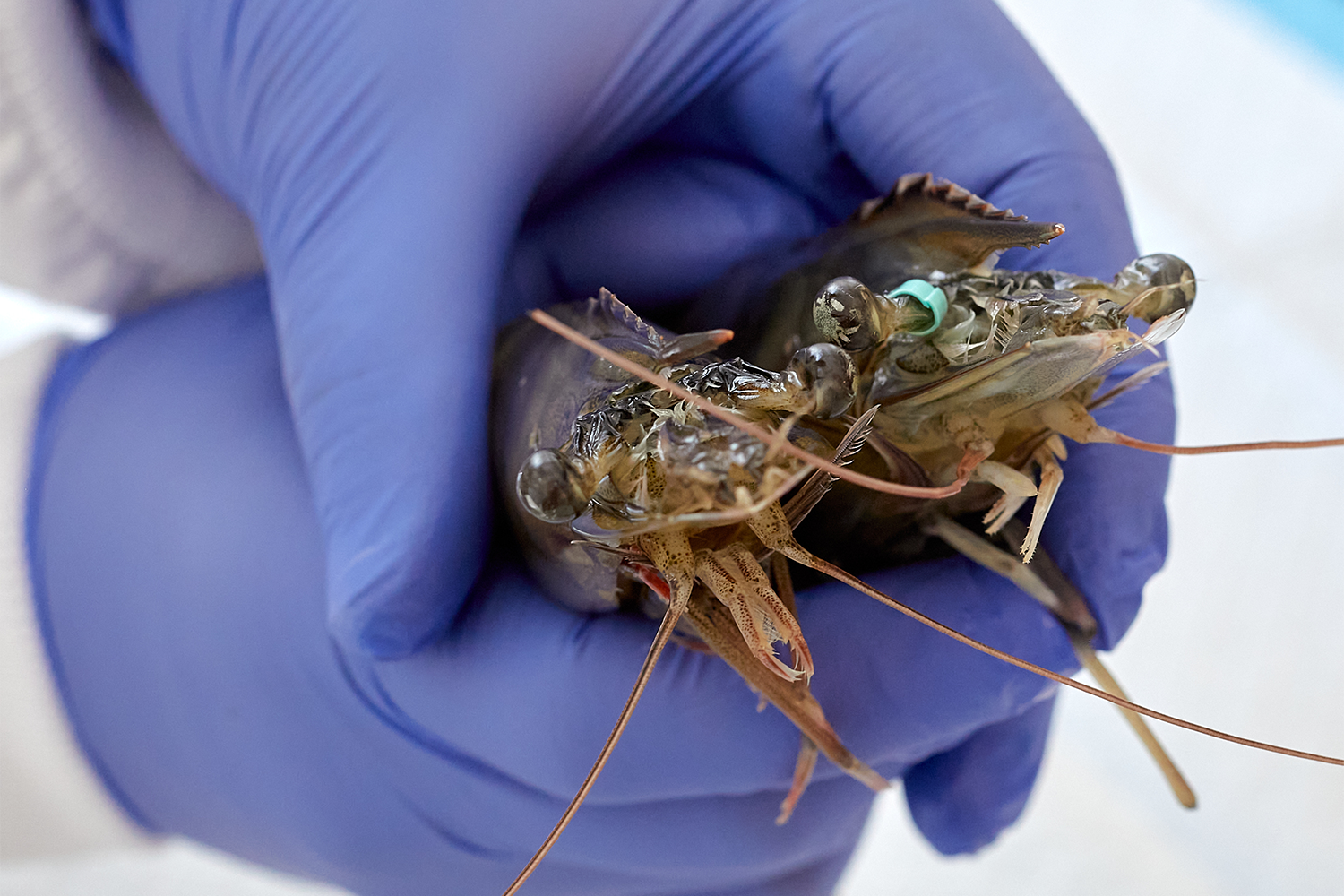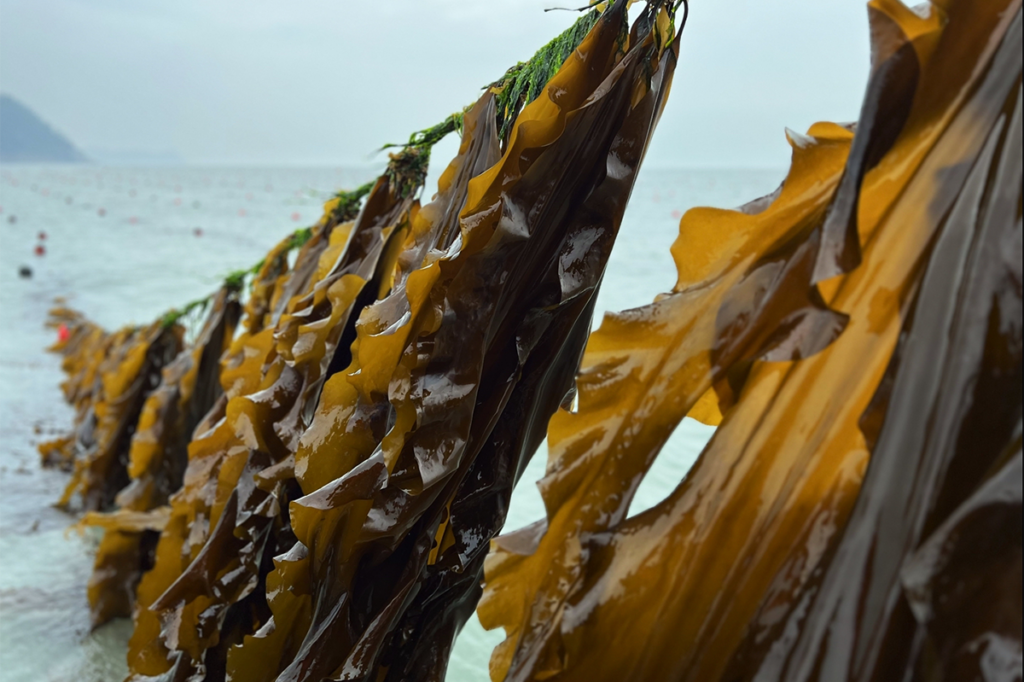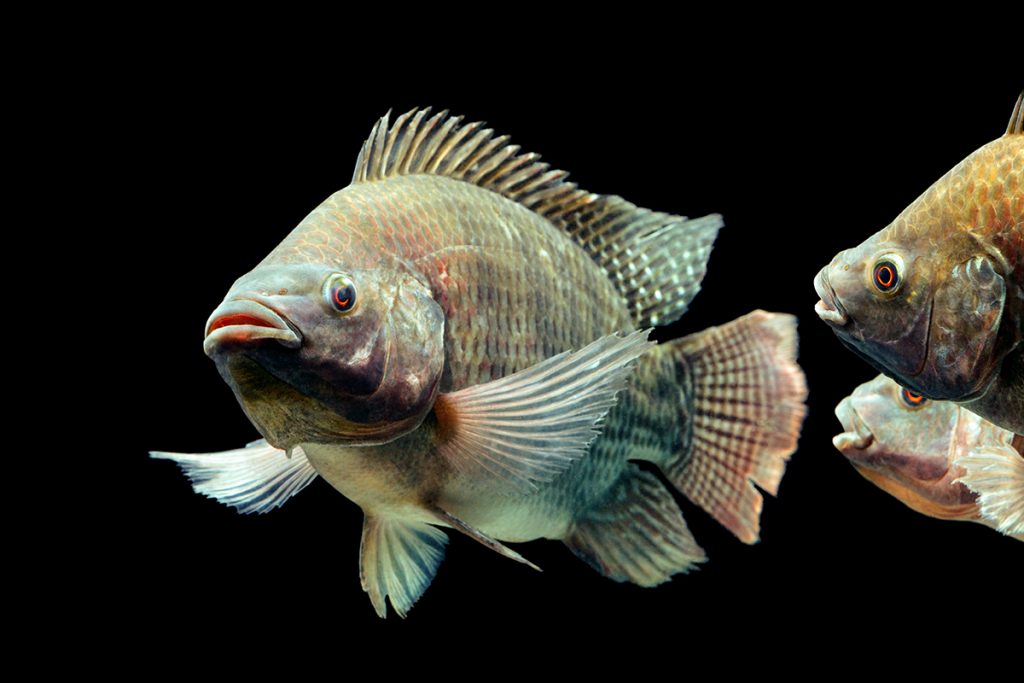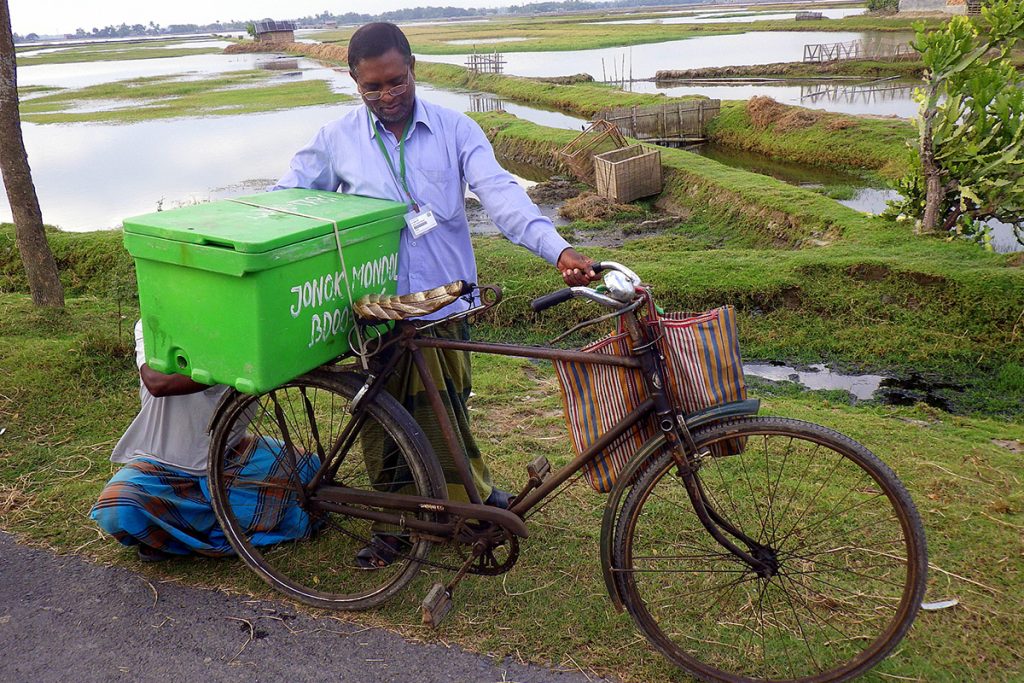Genetic technology can help improve and safeguard shrimp breeding, leading to big wins for aquaculture in Indonesia

Fast growth and disease resistance are two desirable traits for any animal farmer – and this is no exception for shrimp farmers. Over the years, research and development firms have been bolstering shrimp breeding programs, producing high-quality strains that are adapted to various farming contexts and regions.
One such region is eastern Indonesia, where shrimp farmers have been dealing with a host of challenges. Henry Wijaya, director of whiteleg shrimp (vannamei) hatchery Prima Larvae Bali (PLB), knows these challenges all too well.
“Very few hatcheries pay attention to biosecurity, but without it, efforts to improve their results will come to nothing,” Wijaya told the Advocate. “They also rely on live feed from the wild, which can be contaminated and enables disease to spread quickly and easily, while there is a general belief that breeding shrimp is simply a cross of this or that without the need for proper practices or lab systems. Hatcheries need to improve biosecurity by addressing all possible disease vectors, including the use of live feeds.”
To further improve the quality of its offerings, Prima Larvae Bali has started working with U.S.-based Center for Aquaculture Technologies (CAT), a provider of genetics solutions for aquaculture. The hatchery’s goal is to elevate its shrimp breeding program by leveraging CAT’s statistical models to refine the selection of genetic lines for shrimp that grow quickly and thrive in commercial settings. The genetic support involves the utilization of molecular markers and other latest technologies to generate genetically diverse and adaptable lines of shrimp.
To support PLB, CAT used their genetic marker panels containing hundreds of thousands of markers to determine how the genetics of the shrimp are related, any levels of in-breeding that are unhealthy for a particular population, and the origins and structures of different populations. Breeding plans can also be designed to determine which shrimp are best for reproducing. All broodstock are genotyped and genetic crosses are made based on the levels of relatedness and phenotypes. It’s also possible to select animals that are more resistant to disease or can grow faster. The main focus is to create shrimp with larvae that are robust in different environments while maintaining fast growth.
“PLB’s objective is to ensure that its shrimp grow well in different conditions,” said Debbie Plouffe, VP of business development-genetics at CAT. “Our tools allow us to be precise and accurate in the selection of such shrimp while maintaining overall diversity. It’s crucial to select animals not just for the conditions they are in now, but also to have strong diversity within a population in the event of a new challenge. The key is to keep an eye on the future while dealing with short-term objectives.”
Genetic technologies promise dramatic gains for aquaculture by accelerating the breeding of better strains. In Indonesia, they can also help in other ways. Shrimp hatcheries purchase broodstock from international suppliers, mainly in the United States, said Plouffe, but there is an increasing focus on local broodstock programs and genetics to reduce any risks associated with importation and the potential closing of borders, particularly after the COVID-19 pandemic. Developing genetics in local environments is also significant for other reasons.
Genomics and feed teams take aim at improving freshwater prawn aquaculture
“The interaction of genetics and the environment is important as both influence one another,” said Plouffe. “Therefore, selecting animals in the environment in which they’re being produced is a huge advantage. Indonesia is very diverse from top to bottom with a lot of different growing environments and challenges, so locally improved genetics is an advantageous goal.”
Alejandro Gutierrez, director of breeding at CAT, said one challenge for Indonesian shrimp farmers is the emergence of disease with a massive growth in production over the last few years. However, this sometimes didn’t come with proper management of breeding programs or breeding facilities, which is why it’s important to acknowledge Indonesia’s diverse environment.
“Some locations may have diseases that are not found elsewhere,” said Gutierrez. “In this sense, it’s crucial to plan well and select strains that will be robust in the environments that they are in and withstand conditions around Indonesia and other markets.”
Another key trait for shrimp breeding programs is fast growth, which improves the bottom line and is highly heritable and easy to measure. In terms of demand, this trait will remain strong, said Plouffe. But could a balance be achieved between fast growth and other promising traits such as disease resistance, which is particularly important in Indonesia? Could other interesting, emerging traits help to create some differentiation in the market?
“Farmers and producers will be looking for ways to differentiate themselves,” said Plouffe. “We may also see traits that end consumers could be interested in, such as traits that influence the quality of products in stores. Looking ahead, genomic technologies will be key to enabling breeders to keep an eye on their animals’ growth and look for traits that may be a bit more complex than growth, that are perhaps harder to measure or standardize.”
Can this breeding technique breathe new life into giant freshwater prawn farming?
“Farms want to have robust production and grow their shrimp as fast as possible,” said Gutierrez. “Another key point is addressing the issue of communication between scientists and farmers, which can seem quite distant in some places. I would like to see more companies apply genomic tools and markers that will help them achieve gains in their breeding programs.”
Wijaya, meanwhile, expressed his excitement for the relationship with CAT and for how it could impact PLB and other Indonesian shrimp producers.
“For things to work well, you need good transparency and communication,” he said. “We have a strong, robust communication system with CAT and thanks to their data, robust genetic technologies and selection methodologies, the partnership gives us an edge. We are poised to deliver fast-growing, resilient shrimp and hope to expand our markets to other parts of Indonesia in future.”
Now that you've reached the end of the article ...
… please consider supporting GSA’s mission to advance responsible seafood practices through education, advocacy and third-party assurances. The Advocate aims to document the evolution of responsible seafood practices and share the expansive knowledge of our vast network of contributors.
By becoming a Global Seafood Alliance member, you’re ensuring that all of the pre-competitive work we do through member benefits, resources and events can continue. Individual membership costs just $50 a year.
Not a GSA member? Join us.
Author
-

Bonnie Waycott
Correspondent Bonnie Waycott became interested in marine life after learning to snorkel on the Sea of Japan coast near her mother’s hometown. She specializes in aquaculture and fisheries with a particular focus on Japan, and has a keen interest in Tohoku’s aquaculture recovery following the 2011 Great East Japan Earthquake and Tsunami.
Tagged With
Related Posts

Intelligence
Playing favorites: How selective breeding can grow the seaweed sector
Seaweed farming experts are urging producers to employ selective breeding to capitalize on desired traits amid a changing climate.

Health & Welfare
‘The right thing to do’: How aquaculture is innovating to reduce fish stress and improve animal welfare
With research showing that stress can damage meat quality, fish and shrimp farmers are weighing the latest animal welfare solutions.

Intelligence
Aquaculture researcher and shrimp-farming pioneer Alain Michel dies
Alain Michel, an aquaculture researcher who helped develop shrimp-farming industries in tropical countries, has died, according to sources.

Responsibility
Crouching Tigers: Bangladesh shrimp farming at a critical juncture
With improver programs and branding opportunities for its black tiger producers, Bangladesh shrimp farming eyes a more profitable future.


